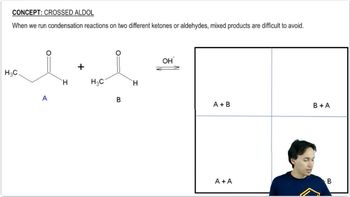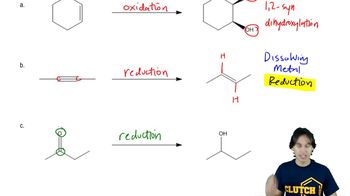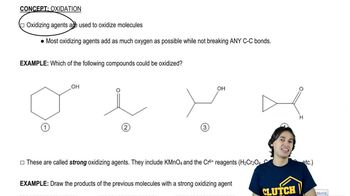Here are the essential concepts you must grasp in order to answer the question correctly.
Aldol Condensation
Aldol condensation is a key reaction in organic chemistry where aldehydes or ketones with alpha-hydrogens react in the presence of a base to form β-hydroxy aldehydes or ketones. This reaction can lead to the formation of larger carbon skeletons and is crucial for synthesizing compounds like but-2-enoic acid from but-2-enal through subsequent dehydration.
Recommended video:
Oxidation-Reduction Reactions
Oxidation-reduction (redox) reactions involve the transfer of electrons between species, resulting in changes in oxidation states. In the context of converting but-2-enal to but-2-enoic acid, understanding how aldehydes can be oxidized to carboxylic acids is essential, as this transformation typically requires an oxidizing agent.
Recommended video:
Distinguishing between Oxidation and Reduction
Reagents and Reaction Conditions
The choice of reagents and reaction conditions is critical in organic synthesis. For the conversion of but-2-enal to but-2-enoic acid, reagents such as potassium permanganate or chromium-based oxidants can be used to facilitate the oxidation process. Understanding the reactivity and selectivity of these reagents helps in designing efficient synthetic pathways.
Recommended video:
 Verified step by step guidance
Verified step by step guidance Verified video answer for a similar problem:
Verified video answer for a similar problem:

